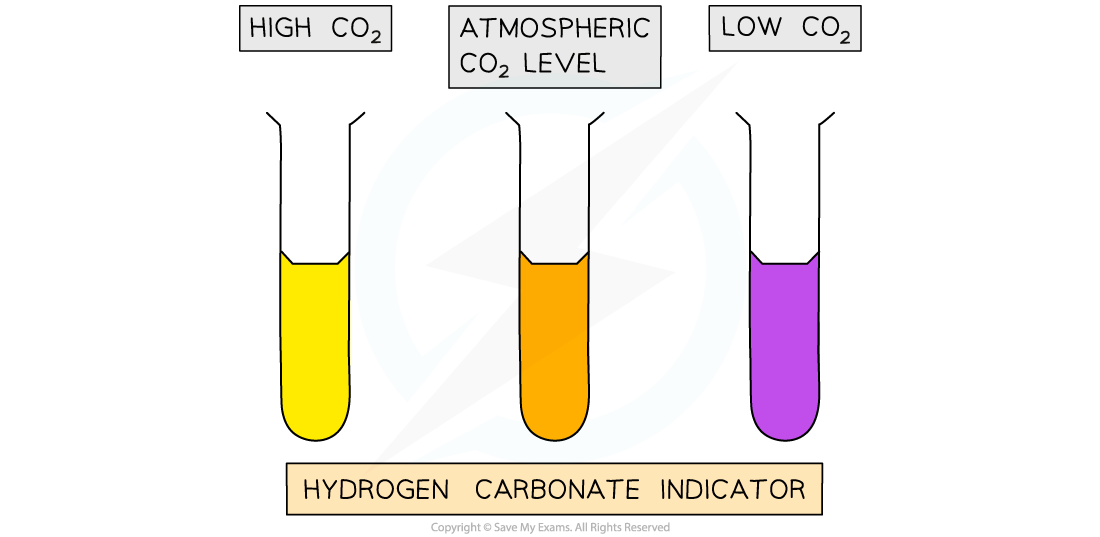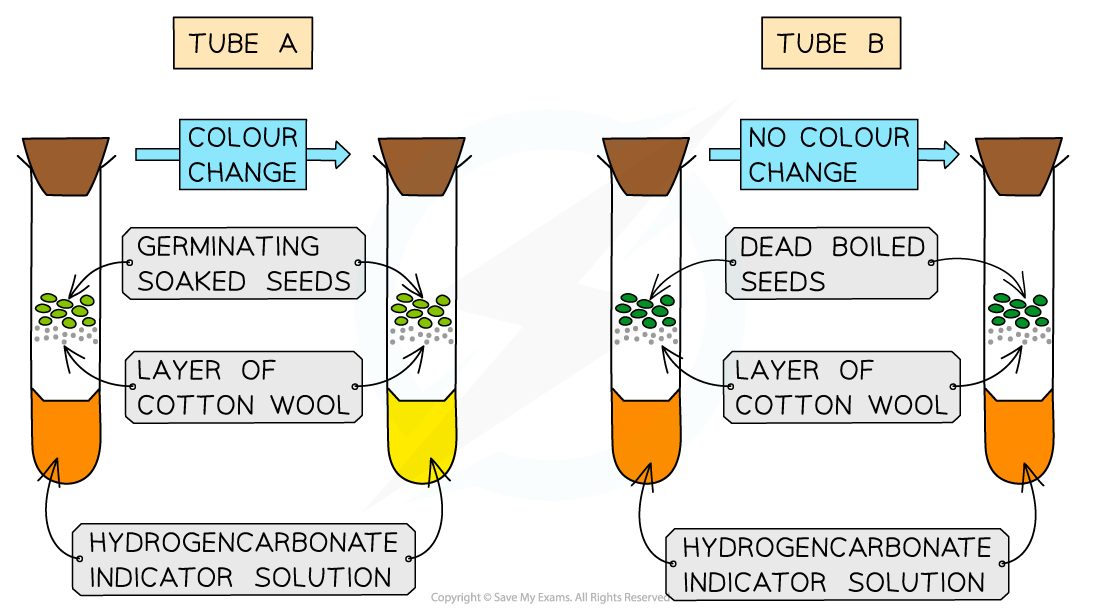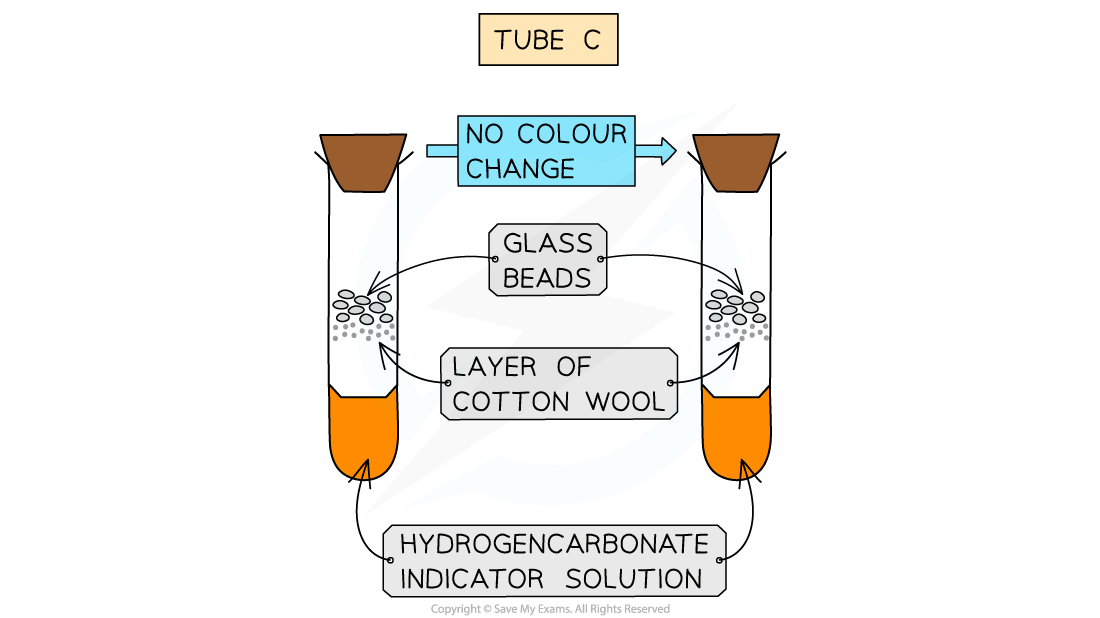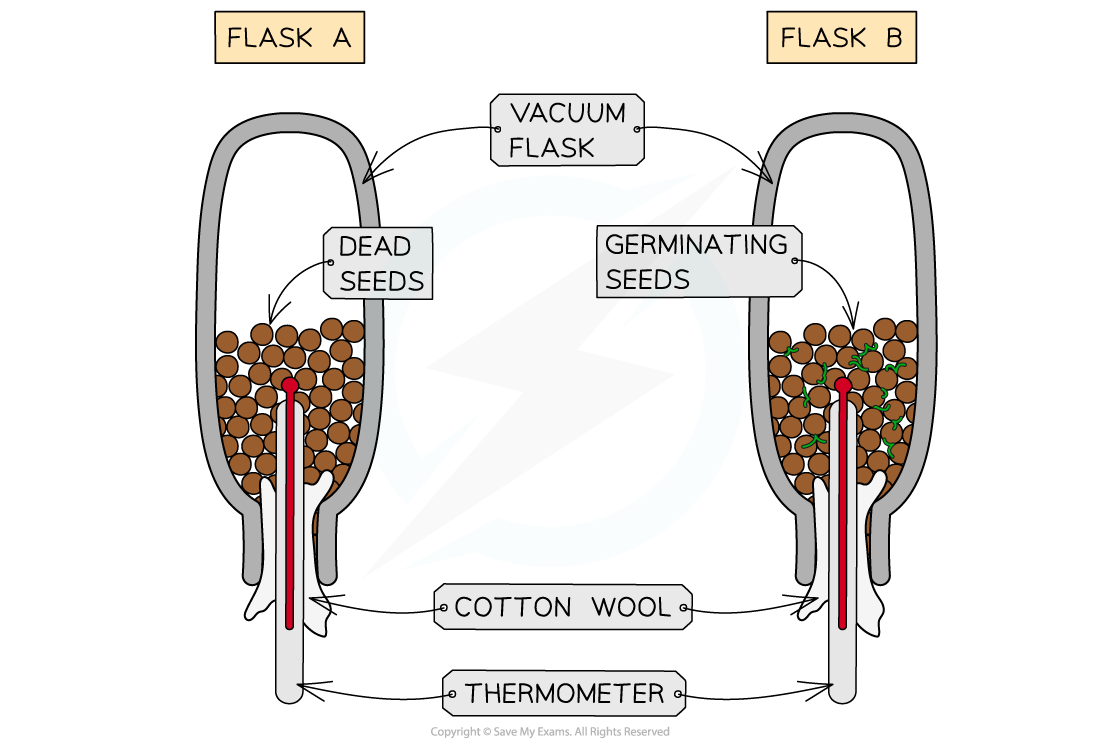- 翰林提供学术活动、国际课程、科研项目一站式留学背景提升服务!
- 400 888 0080
Edexcel IGCSE Biology 复习笔记 2.6.3 Practical: Investigating Respiration
Edexcel IGCSE Biology 复习笔记 2.6.3 Practical: Investigating Respiration
Practical: Investigating Respiration
- We can investigate the production of carbon dioxide and heat from respiration through experiments using germinating seeds or other living organisms such as woodlice
Practical investigation: demonstrating the production of carbon dioxide
Apparatus
- Boiling tubes
- Rubber bungs
- Hydrogen carbonate indicator solution
- Cotton wool
- Glass beads
- Germinating seeds
- Boiled/dead seeds
Method
- Measure out 10 cm3 of hydrogencarbonate indicator into 3 boiling tubes
- Put in a layer of cotton wool
- Place 10 germinating seeds in tube A
- Place 10 boiled/dead seeds in tube B
- Place 10 glass beads in tube C
- Seal each tube with a rubber bung
- After 3 hours, observe the colour of the indicator
Hydrogencarbonate indicator
- Hydrogencarbonate indicator is orange in atmospheric CO2 levels
- In high CO2 levels the indicator absorbs the CO2 and becomes yellow
- In low CO2 levels it loses CO2 and becomes purple
 Colour results for hydrogen carbonate indicator
Colour results for hydrogen carbonate indicator
Results
- In this investigation, we would expect to note the following
- Tube A should turn yellow as the seeds are respiring and producing carbon dioxide
- Tube B should remain orange as the dead seeds produce no carbon dioxide
- Tube C should remain orange as there is no living material in there

 Experiment to demonstrate the production of carbon dioxide by living material during respiration
Experiment to demonstrate the production of carbon dioxide by living material during respirationPractical investigation: demonstrating the production of heat
Apparatus
- Vacuum Flasks
- Thermometer
- Cotton wool
- Germinating seeds
- Dead/boiled seeds
Method
- Set up the flasks as shown in the diagram
- Flask A with the germinating seeds
- Flask B with the dead seeds
- Make sure the cotton wool is plugging the top of each flask
- Hold the thermometer in place with the cotton wool
- Invert the flask
- Record the initial temperature
- After 4 days, record the final temperature
 Experiment to demonstrate the production of heat by living material during respiration
Experiment to demonstrate the production of heat by living material during respirationResults
- The thermometer in the flask with the germinating seeds (Flask B) should show an increase in temperature
- Flask A should remain at room temperature
- This is because the seeds in flask B are respiring and producing heat energy in the process
- This shows that respiration is an exothermic reaction
- The seeds in flask A are not respiring because they are dead, so the temperature remains the same
Applying CORMS evaluation to practical work
- When working with practical investigations, remember to consider your CORMS evaluation
 CORMS evaluation
CORMS evaluation
- In the first investigation, your evaluation should look something like this:
- Change - We will change the content of the boiling tube (germinating seeds, dead seeds or glass beads)
- Organisms - The seeds used should all be of the same age, size and species
- Repeat - We will repeat the investigation several times to ensure our results are reliable
- Measurement 1 - We will observe the change in the hydrogen carbonate indicator
- Measurement 2 - ...after 3 hours
- Same - We will control the volume of hydrogen carbonate indicator, the number of seeds/beads, the temperature of the environment
- For the second investigation, your evaluation should look something like this:
- Change - We will change the content of the flasks (germinating seeds or dead seeds)
- Organisms - The seeds used should all be of the same age, size and species
- Repeat - We will repeat the investigation several times to ensure our results are reliable
- Measurement 1 - We will observe the change in the temperature on the thermometer
- Measurement 2 - ...after 4 days
- Same - We will control the number of seeds, the starting temperature of the flasks, the material and size of the flasks
转载自savemyexam

早鸟钜惠!翰林2025暑期班课上线

最新发布
© 2025. All Rights Reserved. 沪ICP备2023009024号-1








